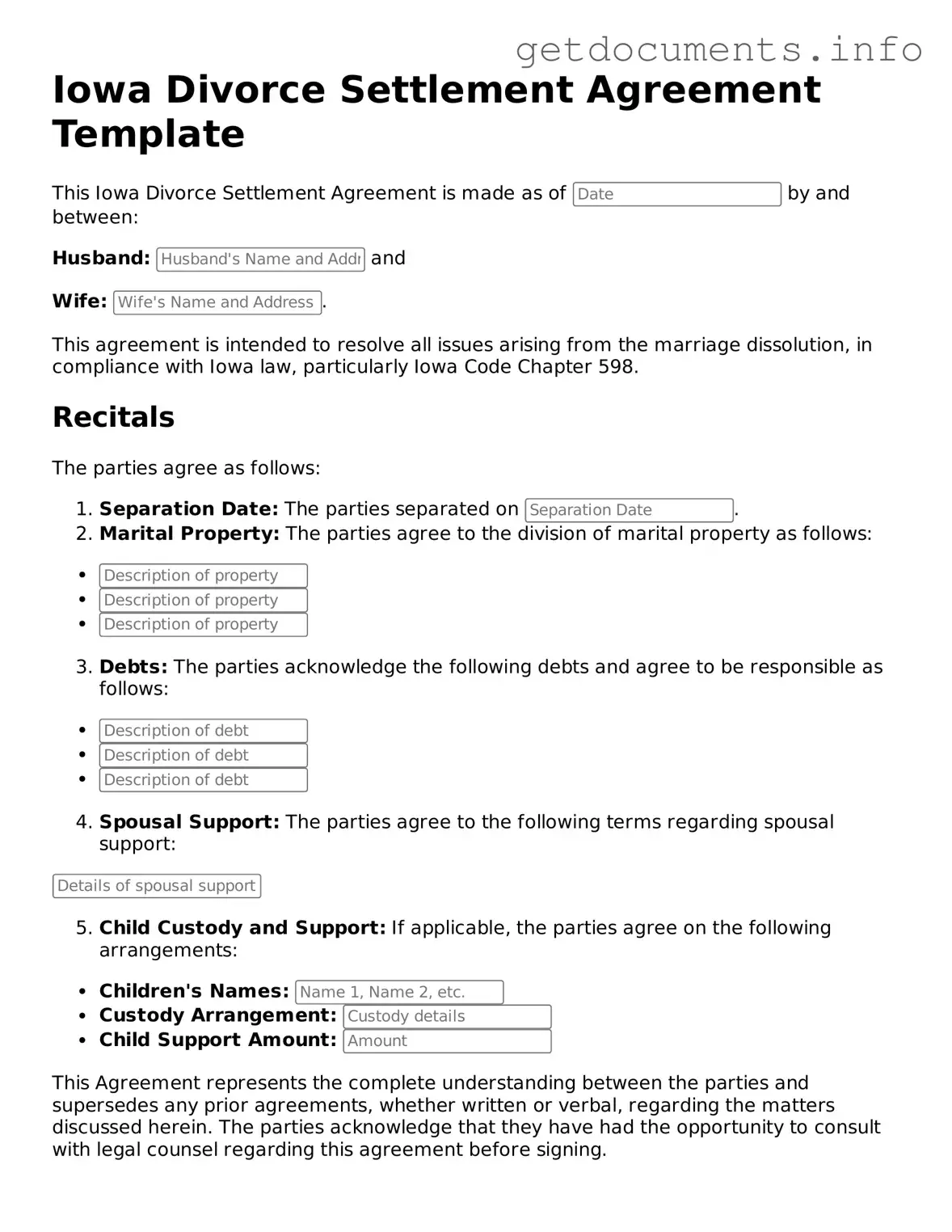Free Divorce Settlement Agreement Template for Iowa
The Iowa Divorce Settlement Agreement form is a legal document that outlines the terms of a divorce between two parties. This agreement typically addresses issues such as property division, child custody, and support obligations. Completing this form is an essential step in finalizing a divorce in Iowa, and individuals can start the process by clicking the button below.
Access Divorce Settlement Agreement Editor
